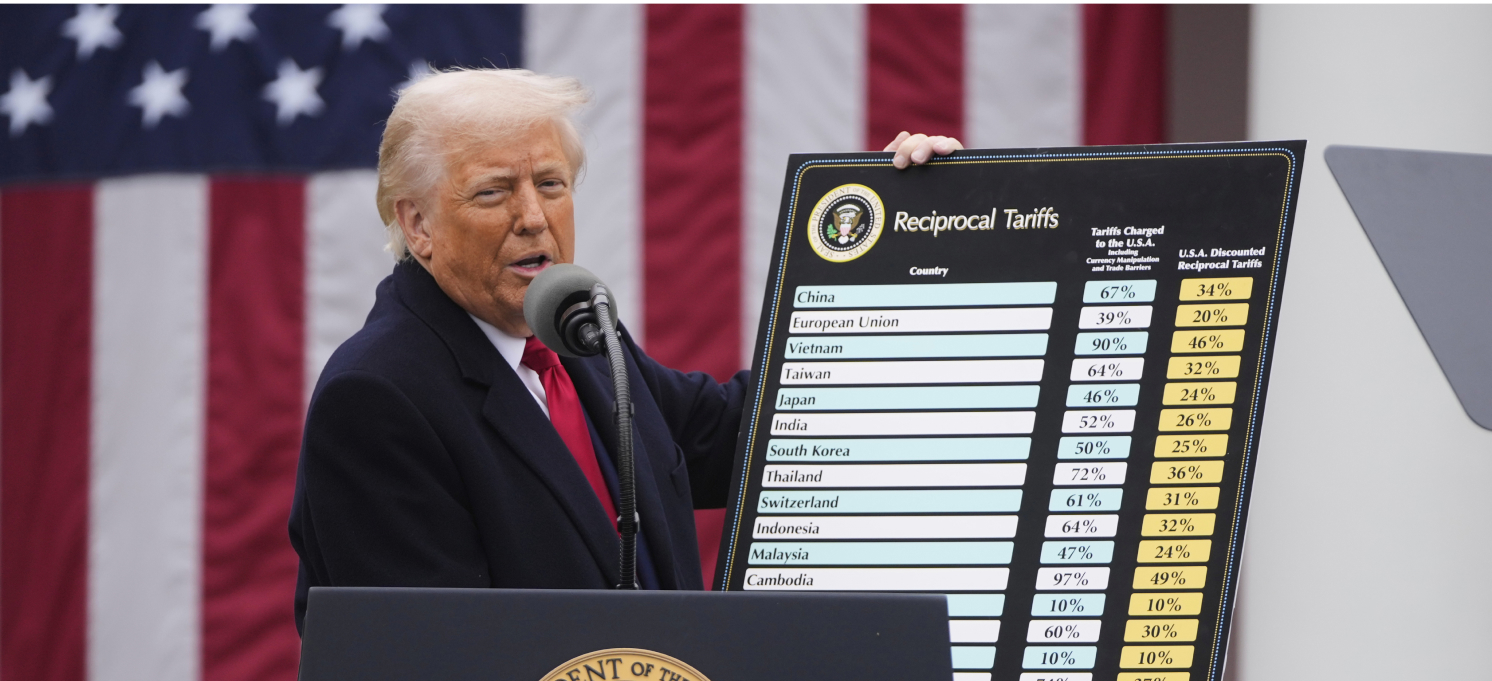
Assessing Mishustin’s first four years
Hello! Welcome to your weekly guide to the Russian economy — written by Alexandra Prokopenko and Alexander Kolyandr and brought to you by The Bell. This week our top story is a look at Prime Minister Mikhail Mishustin’s record in government ahead of a likely reshuffle. We also look at new U.S. sanctions on Russia.
The track record of Russia’s ‘teacher’s pet’ prime minister
Russian President Vladimir Putin will be formally inaugurated for a fifth term next week following his “reelection” earlier this year. Immediately after, the Russian constitution dictates that Prime Minister Mikhail Mishustin and his government must resign. While it’s widely expected that Putin will immediately reinstate Mishustin, there are likely to be ministerial changes. We decided to take a look at what Mishustin and his government have achieved in the four years since the former-tax collector was appointed.
Mishustin’s opinion about himself
Mishustin has served as prime minister for four years, and, according to two sources of The Bell’s sources, believes Putin wants him to stay in position. He’s been in charge for far less than his predecessor, Dmitry Medvedev, who was prime minister from 2012 to 2020. Mishutin himself recently offered a summary of his work in a speech to parliament that was full of praise for himself. In truth, though, he has spent most of his time dealing with the economic shocks caused by the pandemic and Russia’s full-scale invasion of Ukraine.
In his speech, Mishustin listed several of his government’s achievements:
- “The economy grew steadily, and Russia became one of the top five economies by purchasing power parity.” This is true, but comparing economies according to purchasing power parity is controversial;
- “We replenished the federal budget”;
- Russians received pensions and benefits;
- State-subsidized mortgages became available (this is also true, but this program has created serious problems);
- Unemployment fell to a record low of 2.8%.
Of course, all the figures cited by Mishustin were impressive. But you shouldn’t forget that, during Mishustin’s premiership, the reason the economy grew was record state spending – first during the pandemic, then following the invasion of Ukraine.

Without that spending, Mishustin’s premiership would look significantly less impressive. In 2020, Russia spent 9% of its GDP on combatting the pandemic. And the fiscal stimulus following Russia’s invasion of Ukraine is estimated at 10% of GDP. There was no equivalent spending under previous Russian prime ministers.
Crisis manager
Putin nominated Mishustin as prime minister on Jan. 15, 2020. At the time, many observers linked Mishustin’s appointment to preparations for a transition of power. But there were other theories. The Medvedev government had accumulated a trillion rubles of unspent funds by the end of 2019, achieved minimal economic growth, was unable to reverse falling incomes, and failed to properly implement the “national projects” Putin announced as part of his presidential program in 2018. All this meant it was seen as ineffective, and its unpopularity appeared to be damaging general support for the Putin regime.
“The monitoring system for key indicators of national projects developed by Medvedev’s team was so cumbersome it effectively slowed down everyone,” recalled one ex-federal official. Mishustin’s first pledge after his appointment was to speed up work on the projects.
“Unlike Medvedev, Mishustin’s cabinet of ministers was a normal management headquarters,” said a former federal official. According to him, Medvedev used his position to promote his own agenda. “It was a great miracle if a decision was made in a meeting,” he said of the Medvedev era. “And even they might be overturned by the president.”
From the start, Mishustin’s government has been technocratic. But Putin did not give him full independence when building his team, with those the president considered competent in the Medvedev government retaining their posts. These included Finance Minister Anton Siluanov, almost all the ministers with a security portfolio, Energy Minister Alexander Novak, Deputy Prime Minister Yuri Trutnev (in charge of the Arctic and the Far East), and Deputy Prime Minister Yuri Borisov (who oversaw the defense sector).
And Mishustin was apparently very jealous of those of his subordinates who had independent access to Putin. “If Medvedev was calm about Putin calling his deputies, Mishustin almost had seizures,” another federal official said. At the start of Mishustin’s term he and Putin were in regular contact. However, amid the Ukraine war, there are now fewer face-to-face meetings, according to a well-informed source.
When Putin appointed Mishustin, the Covid-19 pandemic was already underway in China. By the end of February, the first cases were reported in Moscow. The new government immediately switched to fire-fighting mode, postponing work on the national projects.
Forgotten ‘National Projects’
At the end of 2021, however, Mishustin returned to the national projects, and came up with a fashionable implementation plan. Mishustin established a special management center located in the Ukraine Hotel opposite the The House of the Government in Moscow. The prime minister still likes to hold some strategic discussions there. Officials have nicknamed it “the bunker.”
Mishustin, who likes to emphasize his tech prowess, devised a system to monitor the implementation of the national projects using AI, which he presented to Putin. The plan was full of English jargon: the initial meeting was a “kick off,” work was to be guided by “As-Is/To-Be” principles, goals would be determined according to SMART metrics, and success would be judged on the principle of “CHANGE and DISRUPT.” The national projects themselves were repackaged, renamed and divided according to themes, each with aspirational names: for example a “new social contract” (targeted benefits for families in need) and “increasing trust and improving the business climate” (this covered reforms of the law enforcement and judicial systems and, of course, went unimplemented).
The total cost of it all was estimated at the time to be 25.7 trillion rubles ($300 billion). At first, this was due to be spent by 2024, but the pandemic forced an extension through 2030. Now, however, the war means they have been entirely forgotten. “National projects? Are you kidding? It's been a long time since anybody thought about them,” said one official.
War government
Since the full-scale invasion of Ukraine in February, 2022,, the government’s work has been focused on ensuring a steady flow of weapons and supplies to the front, and supporting an economy that has been battered by Western sanctions. “The government is coping with both tasks,” said a former government official who is currently working at another state agency.
At the start of the war Mishustin, who usually relishes media attention, ceased all PR activity and largely disappeared from the public eye. At the time, independent media outlet Meduza described him as the “leader” of a group of officials who preferred to remain silent about the war, or used euphemisms about “new challenges” and “the current political situation.” Mishustin’s strategy was to shut up and get on with the everyday work. “It is an ideal technocratic government,” said a federal official. “It has no agenda of its own.”
The phrase “Special Military Operation,” which is used by Russian officials as a euphemism for “war” was only uttered by Mishustin for the first time in public after the partial mobilization in September, 2022. This was when Putin put Mishustin in charge of a coordination council to provide supplies and equipment for the armed forces.
Many Russian officials are eager to impress their bosses by being seen in Ukrainian regions occupied by Russia, or on the frontlines. Even Moscow Mayor Sergei Sobyanin has felt obliged to visit the front. But not Mishustin. So far, he has stayed away from Ukraine, not even visiting the occupied territories – preferring to manage supply issues from Moscow.
Teacher’s pet?
Mishustin is a good apparatchik and a sensitive subordinate, according to one official. He understands the mood in the Kremlin and tries “not just to match them, but to get ahead of them,” he added. Others, though, laugh about Mishustin’s eagerness to please. “He rushes to carry out every assignment, he’s a real teacher’s pet,” said one high-ranking official.
For example, in 2021 and2023, when Putin expressed public concerns about high inflation, Mishustin backed non-market price controls – even though they quickly began inflicting economic damage. As recently as the end of last year, price regulationswere implemented for fuel, poultry and grain. “First the government fought the pandemic, but, after war broke out, it fought its natural instinct to regulate prices,” joked a former official.
Why the world should care
It’s not entirely fair to compare Mishustin to his predecessors: over the past four years, Mishustin has had to deal with two huge economic shocks. But his time in government will likely be remembered for two things. Firstly, Mishustin heads a wartime government, and in wartime there is no scope for economic, social or political development. Secondly, this is very clearly Russia’s first post-Soviet technocratic government, and, at least in public, Mishustin and his ministers are concerned only with effective management.
US sanctions target those helping Russia evade sanctions
The U.S. Office of Foreign Assets Control (OFAC) published Wednesday a list of Russia-related sanctions on 29 individuals, 252 organizations, and 16 ships. This was one of the longest sanctions lists since the start of the war in Ukraine. The sanctions were imposed not only on Russian firms, but on almost 60 companies from other countries (including 16 from China and Hong Kong).
- The Russian companies on the list included some predictable targets in the defense sector (for example, the Volgograd Traktor Plant, a significant constructor of military vehicles which had somehow escaped U.S. sanctions up to now). There were also enterprises that don’t have an obvious military link (such as a manufacturer of transformers), plus a dozen IT companies.
- Pobeda, a budget airline owned by national carrier Aeroflot, was on the list. Until now, Russian airlines have only faced export sanctions that mean they can’t buy Western equipment. Sanctioning Pobeda, however, will likely stop the low-coster from flying abroad (it currently travels to Turkey, the UAE, Uzbekistan and Armenia).
- There are about 200 individuals on the list. Some of these are linked to the defense sector, or sanctioned companies. Several of them were apparently added due to their efforts to circumvent existing sanctions.
- Several people from companies outside of Russia – especially from Turkey – made the list for the same reason. These men and women are mostly involved in transportation, or the export-import business. In addition to the Turks, the sanctions affect companies from Azerbaijan, Belgium, China, Slovakia, and the UAE. Washington claims these companies are helping Moscow to work around existing restrictions.
- The biggest blows in the energy sector were on shipping companies serving Russian energy company Novatek’s Arctic LNG-2 project, which was itself sanctioned last year. In April, The Wall Street Journal reported that the project had suspended production due to sanctions. Back in November, U.S. Assistant Secretary of State for Energy, Geoffrey Pyatt said that Washington wanted to halt Arctic LNG-2.
- One of Russia’s biggest coal miners, Sibanthracite, was sanctioned. Most of the coal it produces is exported, primarily to Asia.
Why the world should care
The emphasis when it comes to U.S. sanctions is clearly shifting to those who violate existing measures, including individuals and companies in third countries. But there remains much scope for tighter sanctions: Aeroflot and state nuclear corporation Rosatom are still unaffected, as are Russia’s leading mining and metallurgy companies.
Figures of the week
- In 2023, state-owned gas giant Gazprom recorded its first net loss for 25 years. This amounted to 629 billion rubles – with revenues dropping 27%, and the turnover of its gas business declining 43%. The previous year, it had generated a net profit of 1.2 trillion rubles. The reason is obvious: the collapse in gas sales to Europe, which was always the most lucrative segment of Gazprom’s business. According to newspaper Kommersant, Gazprom’s sales to the EU last year fell from 62 billion cubic meters to 24 billion cubic meters.
- The government has extended its directive forcing exporters to sell their foreign currency earnings until April 30, 2025. As before, the requirement affects 43 exporters in the energy, metallurgy, chemical, forestry and grain farming sectors. They must deposit at least 80% of their foreign currency revenues into Russian bank accounts.
- Russians’ mortgage debts increased to 18.6 trillion rubles on April 1. At the end of the first quarter, a total of 55% of mortgages had been issued with state subsidies, compared with 38% at the same moment last year.
- The volume of money transfers from Russia to Armenia fell by 40% in the first quarter of this year, Interfax reported citing Armenia’s Central Bank. The regulator suggested this was due to Armenians who had lived in Russia returning to their homeland. However, it could also be that Russians who fled to Armenia because of the war are returning home. In 2022, the money transferred from Russia to Armenia increased fourfold, largely due to this group.
Further reading



PAID SUBSCRIPTION LAUNCH
From May 1, 2025, The Bell in English will no longer be free
From May 1, 2025, all The Bell’s newsletters and online content will be behind a paywall. We have taken this decision so that The Bell can remain financially independent, and maintain our high standards of journalism and economic expertise






